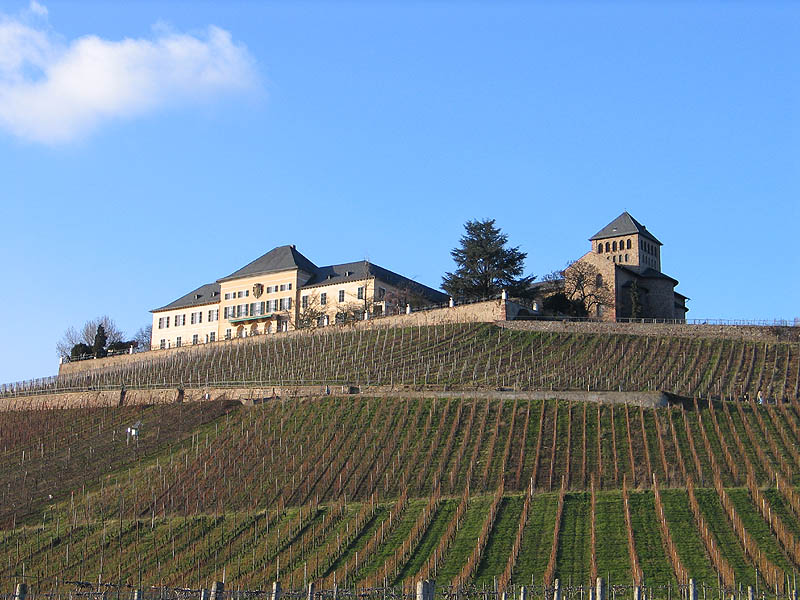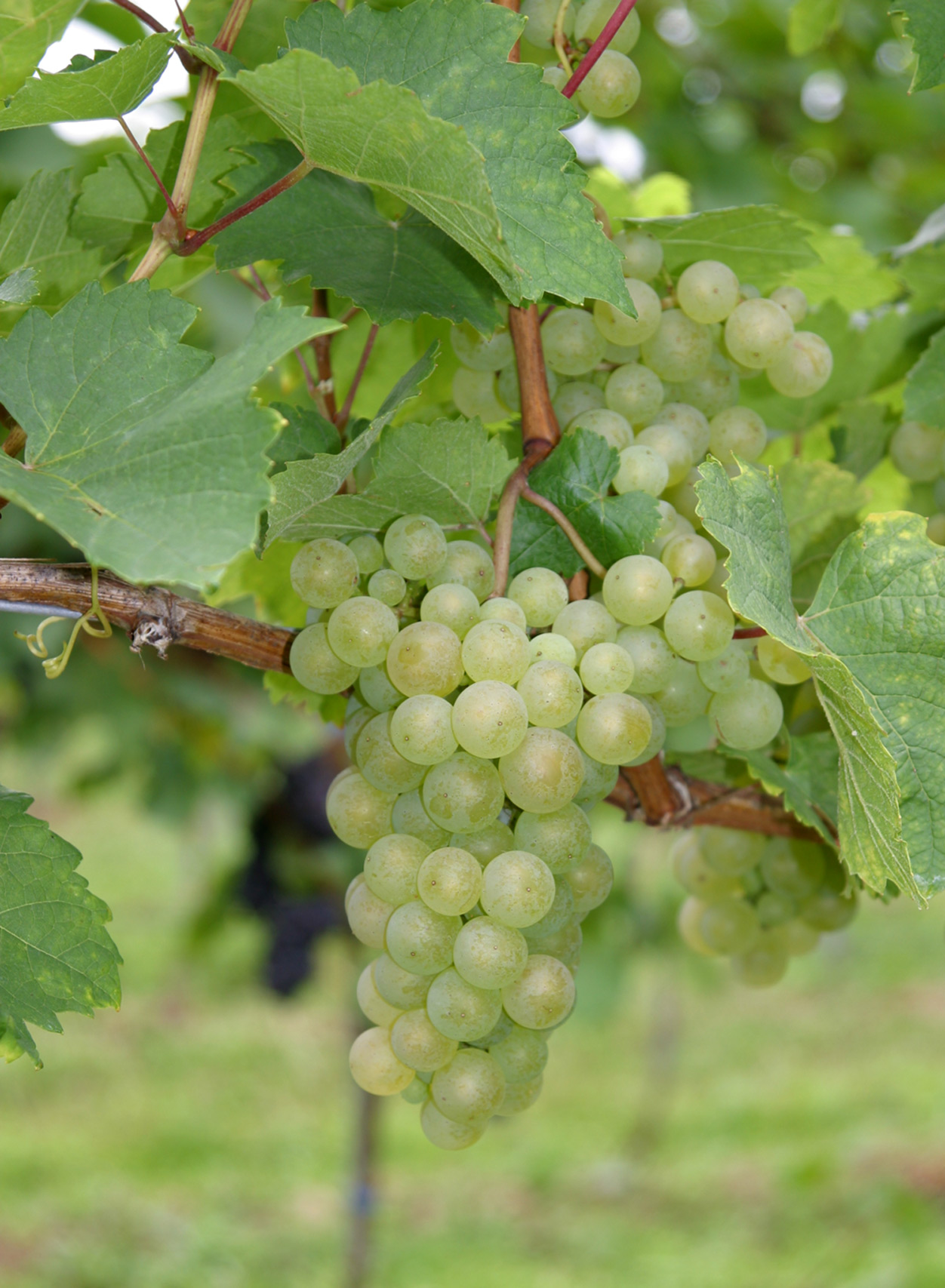|
Orléans (grape)
Orléans is a variety of white grape (sp. ''Vitis vinifera'') which up until the 19th century was much grown in Germany, but in very little use since the early 20th century. It has large berries with thick skins and a high yield. Young Orléans wine has been described as somewhat reminiscent of wine made from white varieties of the pinot family, but with pineapple aromas. History German legends claim that the variety is French in origin, actually from the city of Orléans, and that Charlemagne (742-814) was responsible for the first German plantings, which should have been in Rüdesheimer Berg in Rheingau, which were locally known as ''Berg Orléans''. However, there seem to be no documentary evidence to support this, and other legends point to Charlemagne as an importer of red varieties. The origin of this grape variety is not known with precision; it could have been brought from France by the Cistercian monks who founded much of the German wine industry along Rhine. What is kn ... [...More Info...] [...Related Items...] OR: [Wikipedia] [Google] [Baidu] |
Geisenheim
Geisenheim is a town in the Rheingau-Taunus-Kreis in the ''Regierungsbezirk'' of Darmstadt in Hessen, Germany, and is known as ''Weinstadt'' (“Wine Town”), ''Schulstadt'' (“School Town”), ''Domstadt'' (“Cathedral Town”) and ''Lindenstadt'' (“Linden Tree Town”). Geography Location Geisenheim lies on the Rhine’s right bank between Wiesbaden and Rüdesheim, 3 km away to the west. Mainz lies 21 km away to the east. Neighbouring communities Geisenheim borders in the north on the town of Lorch, in the east on the town of Oestrich-Winkel, in the south on the towns of Ingelheim and Bingen (both in Mainz-Bingen in Rhineland-Palatinate) and in the west on the town of Rüdesheim. Constituent communities The town of Geisenheim is divided into four '' Stadtteile'': the main town (also called Geisenheim), Johannisberg (Grund, Berg, Schloßheide), Marienthal and Stephanshausen. Johannisberg might well be the best known of Geisenheim’s constituent com ... [...More Info...] [...Related Items...] OR: [Wikipedia] [Google] [Baidu] |
Gemischter Satz
Viticulture (from the Latin word for ''vine'') or winegrowing (wine growing) is the cultivation and harvesting of grapes. It is a branch of the science of horticulture. While the native territory of ''Vitis vinifera'', the common grape vine, ranges from Western Europe to the Persian shores of the Caspian Sea, the vine has demonstrated high levels of adaptability to new environments, hence viticulture can be found on every continent except Antarctica. Duties of the viticulturist include monitoring and controlling pests and diseases, fertilizing, irrigation, canopy management, monitoring fruit development and characteristics, deciding when to harvest, and vine pruning during the winter months. Viticulturists are often intimately involved with winemakers, because vineyard management and the resulting grape characteristics provide the basis from which winemaking can begin. A great number of varieties are now approved in the European Union as true grapes for winegrowing and viticult ... [...More Info...] [...Related Items...] OR: [Wikipedia] [Google] [Baidu] |
Bernhard Breuer
Bernhard is both a given name and a surname. Notable people with the name include: Given name *Bernhard of Saxe-Weimar (1604–1639), Duke of Saxe-Weimar *Bernhard, Prince of Saxe-Meiningen (1901–1984), head of the House of Saxe-Meiningen 1946–1984 *Bernhard, Count of Bylandt (1905–1998), German nobleman, artist, and author * Prince Bernhard of Lippe-Biesterfeld (1911–2004), Prince Consort of Queen Juliana of the Netherlands *Bernhard, Hereditary Prince of Baden (born 1970), German prince *Bernhard Frank (1913–2011), German SS Commander * Bernhard Garside (born 1962), British diplomat * Bernhard Goetzke (1884–1964), German actor *Bernhard Grill (born 1961), one of the developers of MP3 technology *Bernhard Heiliger (1915–1995), German sculptor * Bernhard Langer (born 1957), German golfer *Bernhard Maier (born 1963), German celticist *Bernhard Raimann (born 1997), Austrian American football player *Bernhard Riemann (1826–1866), German mathematician *Bernhard Siebk ... [...More Info...] [...Related Items...] OR: [Wikipedia] [Google] [Baidu] |
Laumersheim
Laumersheim is an ''Ortsgemeinde'' – a Municipalities of Germany, municipality in the Bad Dürkheim (district), Bad Dürkheim district in Rhineland-Palatinate, Germany. It lies in the northwest part of the Rhine-Neckar urban agglomeration. Geography Location This municipality lies in the historical ''Leiningerland'' (the lands once held by the House of Leiningen, Counts of Leiningen) on the Eckbach valley floodplain. The landscape is characterized by a hilly transitional zone between low mountains and a plain. To the west rises the Haardt at the Palatinate Forest’s eastern edge, and in the east stretches the Upper Rhine Plain. Neighbouring municipalities Clockwise from the northwest, Laumersheim is bordered by Obersülzen, Dirmstein in the northeast, Gerolsheim in the southeast and Großkarlbach in the southwest. Each lies roughly 2 km away and belongs, like Laumersheim, to the Leiningerland (Verbandsgemeinde), ''Verbandsgemeinde'' of Leiningerland, whose seat is i ... [...More Info...] [...Related Items...] OR: [Wikipedia] [Google] [Baidu] |
Geisenheim Grape Breeding Institute
The Geisenheim Grape Breeding Institute was founded in 1872 and is located in the town of Geisenheim, in Germany's Rheingau region. In 1876 Swiss-born professor Hermann Müller joined the institute, where he developed his namesake grape variety Müller-Thurgau, which became Germany's most-planted grape variety in the 1970s. Professor Helmut Becker worked at the institute from 1964 until his death in 1989. Robinson, Jancis (Ed.) ''The Oxford Companion to Wine''. Oxford: Oxford University Press, second edition, 1999. Academic Grade Geisenheim is the only German institution to award higher academic degrees in winemaking. Formally, undergraduate level viticulture and enology, ending with a bachelor's degree in engineering is awarded by the University of Applied Sciences in Wiesbaden, and the newly introduced master's degree is awarded by the Giessen University. Breeds * White: Müller-Thurgau, Arnsburger, Ehrenfelser, Saphira, Reichensteiner, Ehrenbreitsteiner, Prinzipal, O ... [...More Info...] [...Related Items...] OR: [Wikipedia] [Google] [Baidu] |
Helmut Becker
Helmut Becker (8 March 1927 – 19 July 1990), German viticulturist, was chief of the Geisenheim Grape Breeding Institute.Andrew G Reynolds, ''Grapevine Breeding Programs for the Wine Industry: Traditional and Molecular Techniques'' Elsevier, 2015, , p. 92 ff As a successor of Heinrich Birk, he viewed viticulture from a global perspective and promoted the globalization of a quality wine industry. Dr. Becker collaborated with numerous scientists around the world and encouraged the importation of important Cloning, clones and varieties in New Zealand, Canada, Australia, Japan and other countries. He did early important work in Neustadt/Weinstrasse during the 1950s and 1960s in the European phylloxera eradication program. Some of the grape varieties bred by Helmut Becker at the Research Institute Geisenheim : File:Saphira-08-8.JPG, Saphira (grape), Saphira File:Rondo-07-1.JPG, Rondo (grape), Rondo File:Prinzipal 04a 6.JPG, Prinzipal (grape), Prinzipal File:Dakapo 04 6.JPG, Dakapo Fil ... [...More Info...] [...Related Items...] OR: [Wikipedia] [Google] [Baidu] |
Palatinate (wine Region)
Palatinate (german: Pfalz) is a German wine-growing region (''Weinbaugebiet'') in the area of Bad Dürkheim, Neustadt an der Weinstraße, and Landau in Rhineland-Palatinate. Before 1993, it was known as Rhine Palatinate (''Rheinpfalz''). With under cultivation in 2008, the region is the second largest wine region in Germany after Rheinhessen.German Wine Institute: German wine statistics 2009/2010 There are about 6,800 vintners producing around 6.5 million hectolitres of wine annually. History Although wild varieti ...[...More Info...] [...Related Items...] OR: [Wikipedia] [Google] [Baidu] |
Traminer
Savagnin or Savagnin blanc (not to be confused with Sauvignon blanc) is a variety of white wine grape with green-skinned berries. It is mostly grown in the Jura region of France, where it is made into Savagnin wine or the famous vin jaune and vin de paille. History The history of Savagnin is complicated and not helped by its rather unstable genome. The story starts with the ancient Traminer variety, a green-skinned grape recorded in the Tyrolean village of Tramin from ca. 1000 until the 16th century. (This region now lies in the Italian province of South Tyrol). The famous ampelographer Pierre Galet thought that Traminer was identical to the green-skinned Savagnin blanc in the Jura.winepros.com.au. More recently it has been suggested that Savagnin blanc acquired slight differences in its leaf shape and geraniol content as it travelled to the other end of the Alps. Frankisch in Austria, Heida and Païen in Switzerland, Formentin in Hungary and tramín bílý (brynšt) from ... [...More Info...] [...Related Items...] OR: [Wikipedia] [Google] [Baidu] |
Silvaner
Sylvaner or Silvaner is a variety of white wine grape grown primarily in Alsace and Germany, where its official name is Grüner Silvaner. While the Alsatian versions have primarily been considered simpler wines, it was included among the varieties that can be used to produce Alsace Grand Cru wine in 2006, together with the four 'noble grapes' of Alsace, although only in one vineyard, Zotzenberg. This dichotomy is explained by the vigour of the Sylvaner vine and the grape's neutral flavour, which can lead to blandness unless yields are controlled. On the other hand, it gives a blank canvas for the expression of terroir, and on good sites with skilled winemaking, Sylvaner can produce elegant wines. It has high acidity but naturally reaches high must weights, so is often blended with other varieties such as Riesling or Elbling, and is sometimes made into a dessert wine. History Sylvaner is an ancient variety that has long been grown in Central Europe. In Germany it is best know ... [...More Info...] [...Related Items...] OR: [Wikipedia] [Google] [Baidu] |
Pinot Gris
Pinot Gris, Pinot Grigio (, ) or Grauburgunder is a white wine grape variety of the species ''Vitis vinifera''. Thought to be a mutant clone of the Pinot Noir variety, it normally has a grayish-blue fruit, accounting for its name, but the grapes can have a brownish pink to black and even white appearance. The word ''pinot'' could have been given to it because the grapes grow in small pinecone-shaped clusters. The wines produced from this grape also vary in color from a deep golden yellow to copper and even a light shade of pink,J. Robinson: ''Vines Grapes & Wines'', p. 158. Mitchell Beazley 1986 . and it is one of the more popular grapes for skin-contact wine. Pinot Gris is grown around the globe, with the "spicy" full-bodied Alsatian and lighter-bodied, more acidic Italian styles being most widely recognized. The Alsatian style, often duplicated in New World wine regions such as Marlborough, Tasmania, South Australia, Washington, Oregon, and South Africa tend to have ... [...More Info...] [...Related Items...] OR: [Wikipedia] [Google] [Baidu] |
Heunisch
Gouais blanc () or Weißer Heunisch () is a white grape variety that is seldom grown today but is important as the ancestor of many traditional French and German grape varieties. The name ''Gouais'' derives from the old French adjective ‘gou’, a term of derision befitting its traditional status as the grape of the peasants. Likewise, the German name Weißer Heunisch labels it as one of the lesser " Hunnic" grapes. History Gouais is known to have been widely planted in central and northeastern France in Medieval times. At that time, it was used to produce simple, acidic, white wines, and was primarily grown in unfavourable plots less well-suited for the more highly regarded Pinot noir or Pinot gris. Gouais Blanc was thus the grape of the peasantry rather than of the nobility. Its history before Medieval times is not known with any certainty, but is the subject of much conjecture, similar to many other grape varieties with a long history. Gouais blanc has been proposed a ... [...More Info...] [...Related Items...] OR: [Wikipedia] [Google] [Baidu] |





